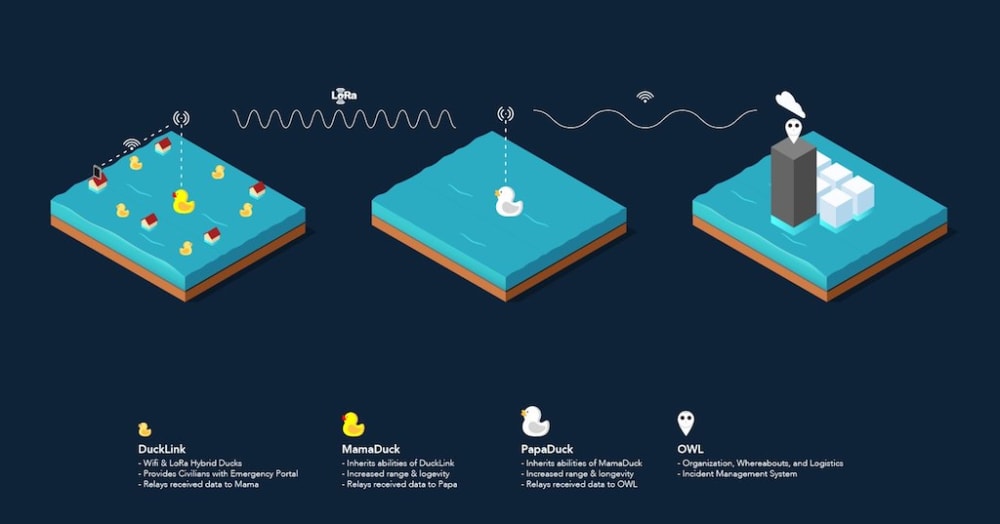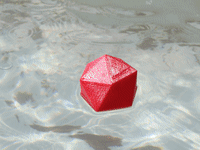Problem
Hurricanes, earthquakes, tornadoes, wildfires, and other events will continue to test the strength of the infrastructure modern society relies on, such as communication equipment like cellular networks.
Communications infrastructure needs to be restored within 72 hours after which the survival chances of victims decrease drastically.
Solution
Our IoT hardware solution ClusterDuck addresses this issue. Ducks are miniaturized multi-terrain wifi-enabled devices that are dispersed in clusters in areas where traditional infrastructure and communications is offline.
Once dispersed, the Ducks create an ad-hoc wireless network, enabling civilians in need of aid to connect to the network, and send information about their situation, location, and needs.
The DuckLink
A DuckLink, or simply a Duck, is a small WiFi-enabled IoT device in a 3D printed enclosure. A DuckLink can connect through WiFi to consumer electronics such as a phone or a laptop. DuckLinks connect to MamaDuck (the central server IoT device) to create a ClusterDuck network.
The Ducks are weatherproof and multi-terrain. They are floatable and can be deployed as buoys or even tethered to buildings or tall structures. The geodesic design was inspired by old school radomes (radar domes) - enclosures to protect radar antennas.
DuckLink Portal - Quick Native Experience without downloading App or Visiting Link
The DuckLinks automatically provide an intuitive emergency captive portal for civilians upon connecting to the hotspot network. This allows the civilians to send immediate requests to the responders.
These portals run on a local server within the Ducks. This is highly strategic, as the civilians won't have the internet capability to neither download apps nor visit websites.
The MamaDuck
The MamaDuck is the central hub of the ClusterDuck network. A single MamaDuck is an IoT LoRa device that connects to DuckLinks over long range.
The ClusterDuck
The ClusterDuck is the complete network generated by a MamaDuck and her DuckLinks.
QuackPack
Open Source Hardware
The ClusterDuck hardware solution would also allow passionate developers and OEMs to build on top of our hardware, via lego-like modules called QuackPacks. In addition to relaying civilian data, additional Quacks would allow Ducks to send additional useful and crucial data via sensors.
The use cases for QuackPacks are endless:
Monitoring smoke for wildfire detection
Weather Monitoring
Water Quality
Turbidity
Dissolved oxygen
Industrial spills
Temperature profiling
And a lot more.
The Competition:
Current market competitors include Project Loon (a Google project), and technology applying low altitude unmanned aerial vehicles. Project Loon’s relies on similar technology to ClusterDuck (wireless LAN networks) however the difference is in the deployability and cost effectiveness. Cluster Duck provides a network for a fraction of the cost of Project Loon.
Video
Like this entry?
-
About the Entrant
- Name:Magus Pereira
- Type of entry:teamTeam members:Magus Pereira, Bryan Knouse, Nick Feuer, Taraqur Rahman, Charlie Evans
- Patent status:pending








